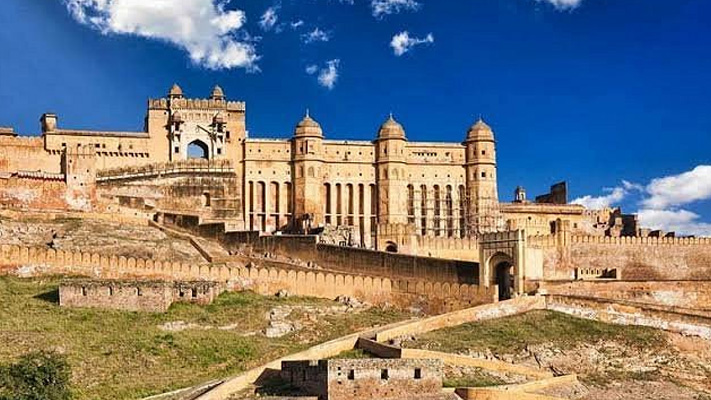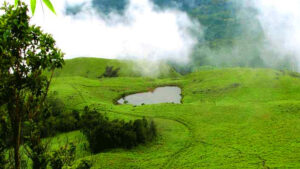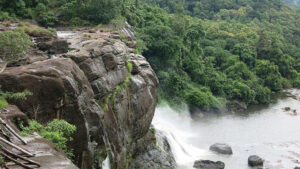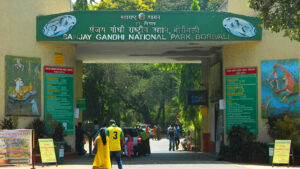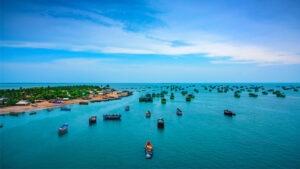THE AMBER FORT, JAIPUR, RAJASTHAN – UNVEIL THE MAJESTIC HERITAGE AND DISCOVER TIMELESS BEAUTY

The Amber Fort, also known as Amer Fort, is a majestic and iconic historical fortress located in Jaipur, Rajasthan, India. This magnificent fort is renowned for its captivating architecture, rich history, and breathtaking views of the surrounding landscape. Built with red sandstone and marble, the Amber Fort is a remarkable blend of Rajput and Mughal architectural styles, showcasing intricate carvings, grand courtyards, impressive gateways, and ornate palaces. Visitors can explore its various sections, including the Diwan-e-Aam (Hall of Public Audience), Diwan-e-Khas (Hall of Private Audience), Sheesh Mahal (Mirror Palace), and Sukh Niwas (Pleasure Palace). The fort also offers a mesmerizing Sound and Light Show in the evening, narrating the tales of its glorious past. A visit to the Amber Fort is a journey through history, culture, and architectural splendor, making it a must-visit destination in Jaipur.

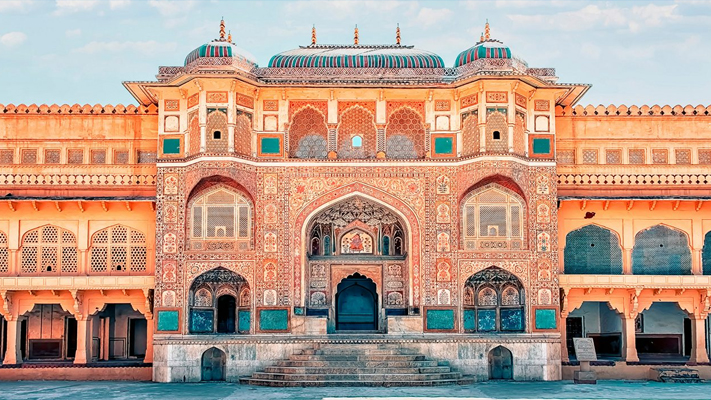
What to Expect
When visiting the Amber Fort in Jaipur, here are some things you can expect:
- Impressive Architecture: Be prepared to be amazed by the stunning architecture of the Amber Fort. From the ornate carvings and intricate details to the impressive gateways and majestic palaces, the fort exhibits the grandeur of Rajput and Mughal architectural styles.
- Fascinating History: The Amber Fort has a rich historical background that dates back to the 16th century. As you explore the fort, you’ll come across fascinating stories and anecdotes that showcase the valor and opulence of the Rajput rulers.
- Elephant Rides: One of the highlights of visiting the Amber Fort is the option to enjoy an elephant ride up the hill to the fort’s entrance. It’s a unique and memorable experience that adds to the charm of your visit. However, please consider the ethical aspects of such rides and ensure the well-being of the animals.
- Palace Complex: The fort houses several palaces and courtyards that were once used by the royals. You can explore the Diwan-e-Aam, where the king met the public, and the Diwan-e-Khas, a private audience hall adorned with intricate mirror work. The Sheesh Mahal, or Mirror Palace, is a must-visit with its breathtaking mirror-covered walls and ceilings.
- Stunning Views: From various vantage points within the fort, you can enjoy panoramic views of the surrounding hills, Maota Lake, and the city of Jaipur. The breathtaking vistas offer fantastic photo opportunities and a chance to appreciate the natural beauty of the region.
- Sound and Light Show: In the evening, the Amber Fort hosts a captivating Sound and Light Show that narrates the history and legends associated with the fort. The show combines colorful lights, music, and storytelling to create an immersive experience.
- Local Art and Handicrafts: Inside the fort, you’ll find shops and stalls selling traditional Rajasthani handicrafts, jewelry, textiles, and other souvenirs. It’s a great opportunity to shop for unique items and support local artisans.
Remember to wear comfortable footwear as there are many steps and uneven surfaces to navigate within the fort. Also, carry water and sun protection, as the Jaipur weather can get hot and sunny. Exploring the Amber Fort is a fascinating journey into history, art, and culture, providing a glimpse into the grandeur of Rajasthan’s royal heritage.
Inside the Fort
Inside the Amber Fort, visitors can explore various sections and attractions that offer a glimpse into the opulent lifestyle of the royals. Here are some key features and experiences you can expect:
- Ganesh Pol: This is the main entrance to the palace complex and is known for its impressive architecture and intricate decorations. The Ganesh Pol is adorned with beautiful frescoes and exquisite carvings.
- Diwan-e-Aam: Also known as the Hall of Public Audience, this is where the king used to meet and address the general public. The hall features elaborately designed pillars and a raised platform for the king’s throne.
- Diwan-e-Khas: The Diwan-e-Khas, or Hall of Private Audience, is a remarkable space where the king would hold private meetings and receive distinguished guests. It is adorned with stunning mirror work and intricate floral patterns.
- Sheesh Mahal: The Sheesh Mahal, or Mirror Palace, is a breathtaking chamber entirely covered in mirror work. It creates a mesmerizing effect as light reflects off the mirrors, giving the illusion of a starry night sky.
- Sukh Niwas: The Sukh Niwas, or Pleasure Palace, was designed to provide a comfortable retreat for the royals during the hot summers. It features a cooling system of water cascades and fountains, along with intricately carved marble screens.
- Royal Chambers and Palaces: Inside the Amber Fort, you can explore various rooms and chambers that were once used by the royal family. These include the Maharaja’s private chambers, the queen’s quarters, and other rooms that showcase the luxurious lifestyle of the royals.
- Temples: The fort complex is home to several temples dedicated to Hindu deities. The most prominent among them is the Shila Devi Temple, dedicated to Goddess Durga. The temple is known for its silver doors and the annual Navaratri festival celebration.
- Gardens and Courtyards: The fort features beautiful gardens and courtyards where the royals would relax and enjoy leisurely activities. The lush greenery, fountains, and well-manicured landscapes create a serene ambiance.


Other Top Attractions Nearby
Apart from the Amber Fort, there are several other top attractions near Jaipur that are worth exploring. Here are some notable ones:
- Jaigarh Fort: Located on a hilltop near the Amber Fort, Jaigarh Fort offers stunning views of the surrounding landscape. It is known for its massive cannon, Jaivana, which is believed to be the world’s largest cannon on wheels.
- Nahargarh Fort: Another hilltop fort near Jaipur, Nahargarh Fort provides panoramic views of the city. It was originally built as a defense fort and later served as a royal retreat. The fort is popular for its architectural beauty and captivating sunset views.
- City Palace: Situated in the heart of Jaipur, the City Palace is a splendid blend of Rajput and Mughal architecture. It houses several palaces, courtyards, and museums that display a remarkable collection of artifacts, artwork, and historical items.
- Hawa Mahal: Known as the “Palace of Winds,” Hawa Mahal is a unique architectural masterpiece in Jaipur. Its distinctive facade features numerous small windows and balconies, allowing cool breezes to flow through the palace.
- Jantar Mantar: This UNESCO World Heritage Site is an astronomical observatory built by Maharaja Jai Singh II. It consists of several large instruments used for measuring time, tracking celestial bodies, and observing astronomical events.
- Albert Hall Museum: Located in the Ram Niwas Garden, the Albert Hall Museum is the oldest museum in Rajasthan. It houses a diverse collection of artifacts, including paintings, sculptures, textiles, and decorative arts.
- Birla Mandir: Also known as the Laxmi Narayan Temple, the Birla Mandir is a modern Hindu temple made of white marble. It is dedicated to Lord Vishnu and Goddess Laxmi and is known for its intricate carvings and serene atmosphere.
- Chokhi Dhani: A cultural village located on the outskirts of Jaipur, Chokhi Dhani offers a glimpse into Rajasthani traditions, folk performances, traditional cuisine, and local arts and crafts. It provides an immersive cultural experience.

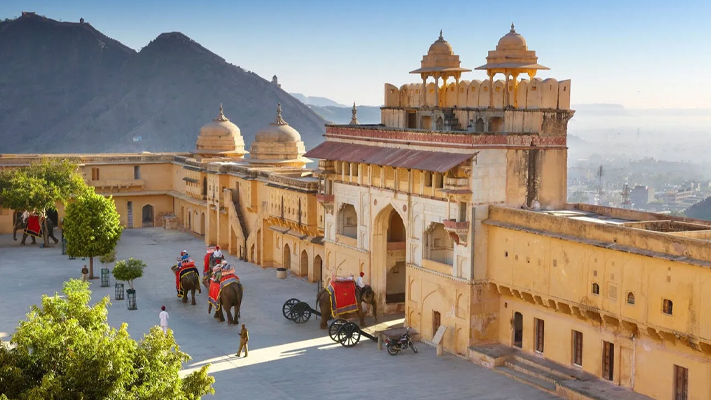
Best Time to Visit
The best time to visit Jaipur and its surrounding attractions, including the Amber Fort, is during the winter months from October to March. Here’s why:
- Weather: During winter, the weather in Jaipur is pleasant and ideal for exploring outdoor attractions. The temperature ranges from around 15°C (59°F) to 25°C (77°F) during the day, making it comfortable for sightseeing and outdoor activities.
- Festivals: The winter season in Jaipur is marked by various cultural festivals and events. The most prominent one is the Jaipur Literature Festival, held in January, which attracts renowned authors, speakers, and literary enthusiasts from around the world. Additionally, the Kite Festival in January and the Elephant Festival in March offer unique cultural experiences.
- Sightseeing: Winter is the best time to explore the attractions near Jaipur, including the Amber Fort, as the weather is pleasant and conducive to outdoor activities. You can comfortably explore the fort complex, walk through the gardens, and enjoy the panoramic views without being affected by extreme temperatures.
- Shopping: Winter is an ideal time for shopping in Jaipur, as the weather is pleasant for exploring the bustling markets and bazaars. You can indulge in buying traditional Rajasthani textiles, jewelry, handicrafts, and other unique items.



